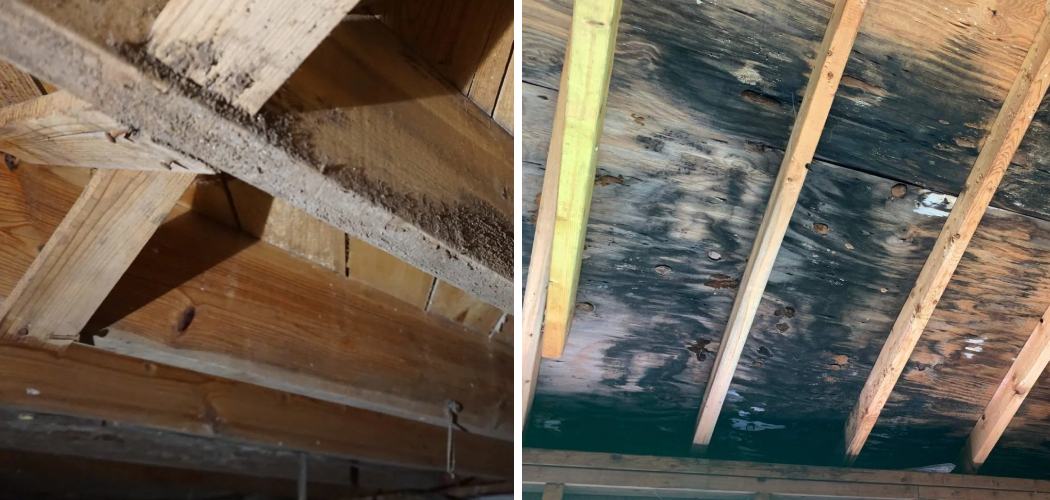Mold in crawl space floor joists can cause serious damage to a home’s structure and air quality. Not only can mold weaken the joists and create an unsafe living environment, but it can also create a musty odor that will permeate your home. If left untreated, mold growth can spread and contaminate other areas of the house, such as walls, ceilings, and ventilation systems.
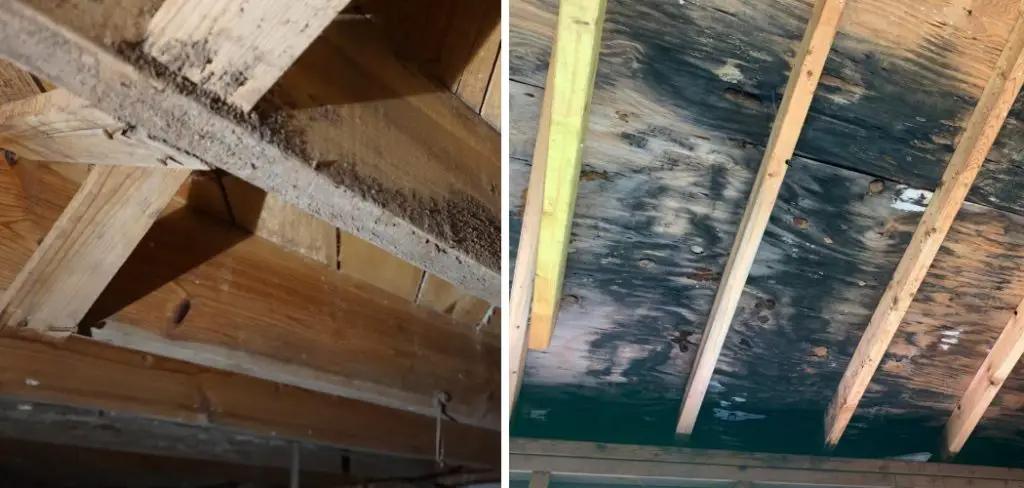
The advantage of removing mold from crawl space floor joists is that it helps reduce moisture in the home and prevent mold growth. Removing the mold also eliminates unhealthy air quality inside the home, which can cause respiratory problems for those living there. Additionally, by removing the mold, you can clear out any musty odors that may linger in the home. In this blog post, You will learn how to remove mold from crawl space floor joists.
Step-by-Step Processes for How to Remove Mold From Crawl Space Floor Joists
Step 1: Inspect the Crawl Space Floor Joists
Before you begin mold removal, it is important to inspect the crawl space floor joists for any additional signs of moisture damage. Look for water stains or black spots which may indicate areas of mold growth. To protect yourself from inhaling spores and spreading contamination, wear a respirator mask, gloves, and goggles. Do not touch the mold directly, as it could cause skin irritation or an allergic reaction.
Step 2: Ventilate the Crawl Space
Before you begin working in the crawl space, open up all the windows and doors to allow fresh air circulation. This will help ensure that any spores are not spread throughout your home. Check the crawl space for any debris or dust. Vacuum up loose dirt and sweep away cobwebs to ensure all surfaces are completely clear of particles.
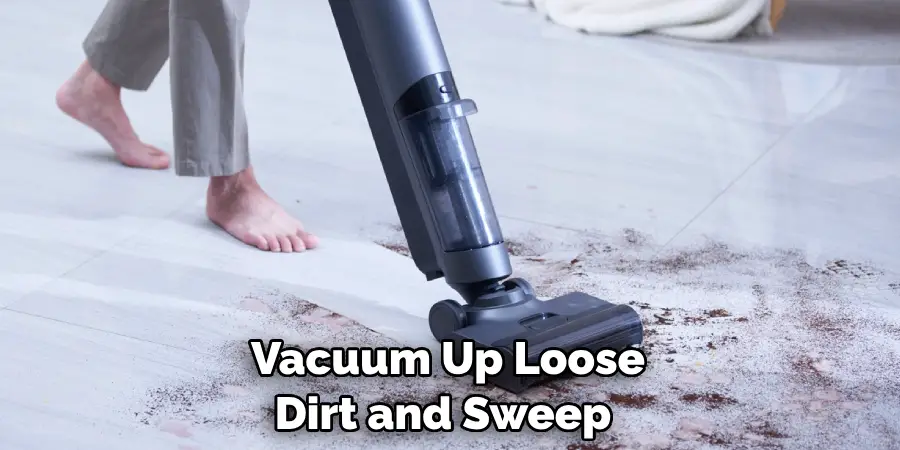
Step 3: Remove Large Areas of Mold
If you find large areas of mold, use a non-toxic solution to break down the spores and remove them. Make sure to discard all clothes and sponges used for cleaning in a sealed plastic bag. Apply a mold remover product to the affected area, following the manufacturer’s instructions for application. Be sure to wear protection while applying the mold remover and avoid contact with skin, eyes, and mouth.
Step 4: Allow the Mold Remover to Set
Allow the mold remover to set for a few minutes, then scrub away any remaining spores. Use a brush or sponge to ensure that all of the mold has been removed, and discard cloths used in cleaning. Using a dehumidifier, dry out any areas affected by mold. This will help to prevent moisture buildup and further growth of mold in the future.
Step 5: Clean Any Remaining Mold Spores
Once the area has been dried completely, use an anti-microbial cleaner to remove any remaining spores. To ensure that mold growth does not return, make sure to inspect the crawl space floor joists regularly. If you notice any signs of moisture or mold, repeat these steps as soon as possible.
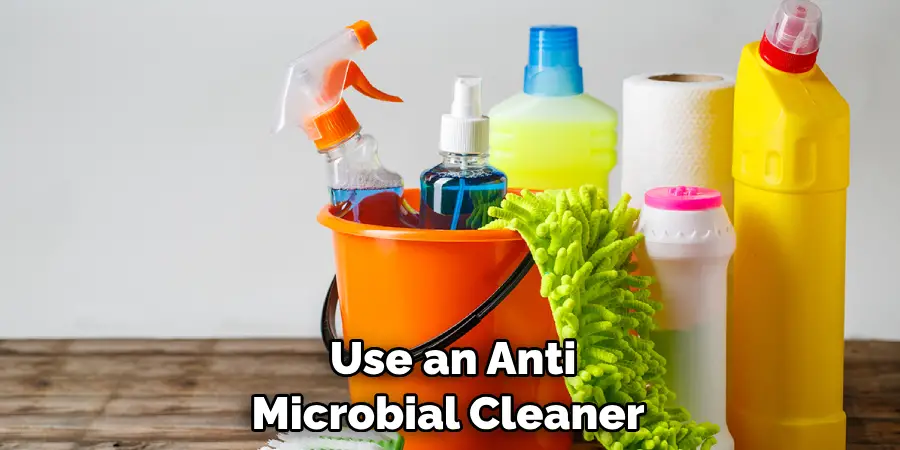
With these steps, you should now be prepared to remove any mold from your crawl space floor joists effectively. Remember to be safe and use protective gear while working in the crawl space, and make sure to inspect the area regularly for any new signs of mold growth.
Safety Tips for How to Remove Mold From Crawl Space Floor Joists
- Wear the appropriate protective gear, such as a full-face respirator, goggles, and gloves. Long sleeve shirts and pants provide extra protection from mold spores.
- Ensure all existing mold is removed before attempting any repair work on floor joists in the crawl space. This will minimize potential cross-contamination of other parts of the home or building.
- Vacuum the affected area with a powerful HEPA vacuum to remove visible mold growth from floor joists and surrounding surfaces.
- Pay special attention to corners of the crawl space, as these areas often accumulate high moisture levels and can be hotspots for mold growth.
- Ventilate the area by installing exhaust fans or opening windows and doors to help eliminate moisture buildup in the space.
- Use a damp cloth soaked in mild detergent and water to wipe down visible mold growth on floor joists. After wiping, rinse with clean water and let the surfaces dry completely before sealing or repairing any areas affected by mold.
- Seal all cracks, crevices, gaps, and other visible sources of moisture in the crawl space to prevent mold from returning and to make the area more comfortable for homeowners. If necessary, consider waterproofing the interior walls and floors of the crawl space to control mold growth further.
These safety tips will help you successfully remove mold from your home’s crawl space floor joists. In addition, regularly inspecting and cleaning your crawl space is essential for maintaining a healthy living environment.
Should You Use a Chemical Cleaner or Natural Cleaning Solution to Remove Mold?
Chemical cleaners can remove mold from crawl space floor joists, but it is important to exercise caution when doing so. Chemical cleaners are incredibly powerful and should be handled with extreme care. Take the time to read all safety precautions before attempting any kind of chemical cleaner. Natural cleaning solutions can also be used as an alternative to chemical cleaners.
Natural cleaners are generally gentler on the environment and less hazardous to handle. Vinegar is a popular natural cleaner for removing mold from crawl space floor joists, while baking soda can be used as an absorbent to trap mold spores.
When using either chemical or natural cleaning solutions, it is important to take extra precautions and wear protective clothing such as gloves, goggles, and a face mask. Be sure to keep windows open for proper ventilation and avoid breathing in any fumes or mold spores.
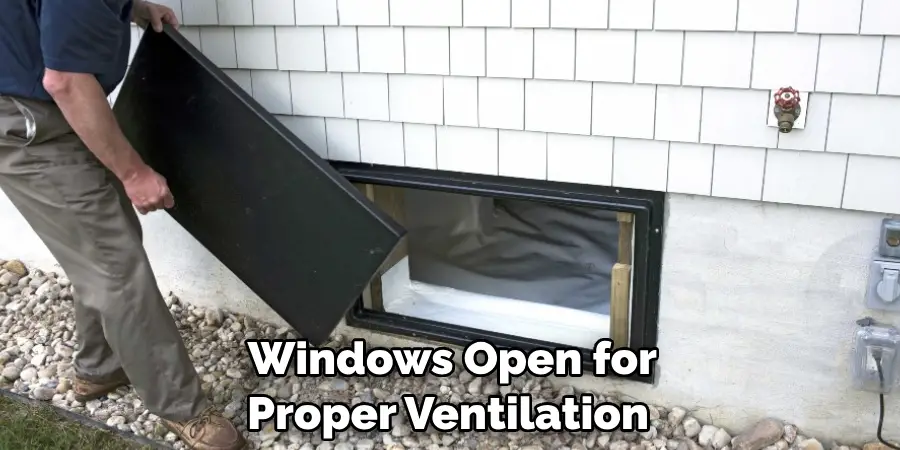
How Can You Prevent Mold From Growing Again in the Future?
Once all visible mold has been removed from the crawl space floor joists, there are a few measures you can take to help prevent future mold growth. The most important factor is to ensure the space stays dry and well-ventilated.
Install a dehumidifier in the area to help keep moisture levels low and use an exhaust fan or other ventilation systems for air circulation. You may also want to consider having a vapor barrier installed on the ground, which can help keep moisture out of the area and minimize potential mold growth.
Additionally, check your crawl space periodically for any signs of water infiltration or condensation that could lead to future mold problems. These steps will help you create an environment that is hostile to mold development and better protect your home. By following these steps, you can help ensure that mold will not grow back in your crawl space and keep your family safe from the potential health hazards associated with mold growth.
Should You Hire a Professional to Remove the Mold or Can You Do It Yourself?
Removing mold from crawl space floor joists is important in keeping your home safe and healthy. While taking on the job yourself can be tempting, it’s best to leave this job to a professional with the right skills and knowledge.
Doing so can help ensure that no mold spores remain in the area after treatment which could lead to more serious health risks. A professional mold remediation team will be equipped to assess the severity of the mold properly, identify where it’s coming from, and have the tools needed to remove the mold and prevent future growth completely.
They can also create an airtight barrier to keep any remaining mold spores contained. This type of work requires specialized gear and experience, making it a job best left to professionals. If you decide to attempt mold removal yourself, ensure you know what you’re doing and follow all safety precautions. Clean any debris and dust from the crawl space before using an approved mold-killing solution.
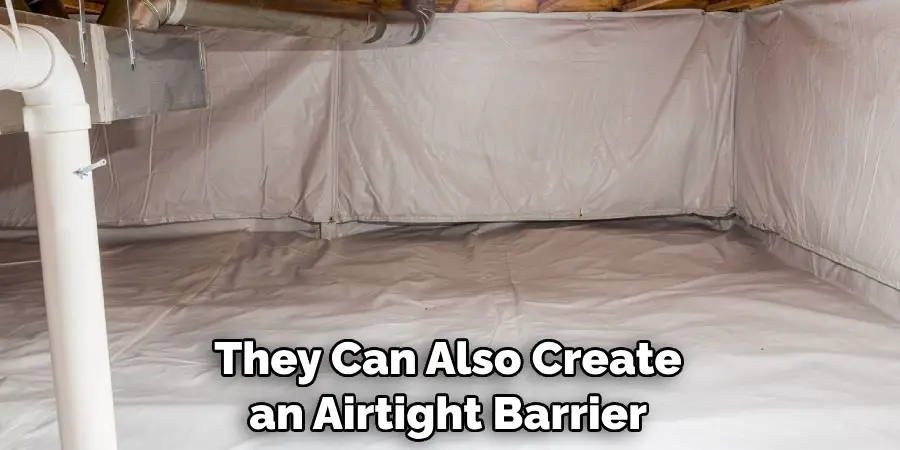
How Long Should You Wait Before Re-entering the Area After Removing the Mold?
Once all mold growth has been removed, it is best to wait at least 24 hours before re-entering the crawl space. During this time, you should also run an air purifier or fan in the area to help clear out any residual spores and ensure that all of the moisture has dissipated. Once the area is deemed safe for entry, make sure to wear protective clothing and be mindful of the potential for mold regrowth.
You should also check the air quality of the crawl space often, as moisture levels can fluctuate, leading to mold growth. A dehumidifier or other specialized equipment may be necessary to keep the humidity under control. If there is any visible evidence that mold has returned or if the air quality tests indicate that mold spores are present, it will be necessary to repeat the cleaning and removal process. Regular monitoring and maintenance can help keep your crawl space mold-free.
What Type of Cleaning Solution or Detergent Should You Use to Clean Up After the Removal Process is Complete?
The cleaning solution or detergent you choose for your crawl space floor joists should be safe and effective against the type of mold you are dealing with. Generally, a bleach solution is recommended when dealing with black mold in damp and dark areas like a crawl space. Wear protective gear (gloves, goggles, plastic sheet) before handling any cleaning materials. Mix one-half cup of bleach per gallon of water to make your cleaning solution.
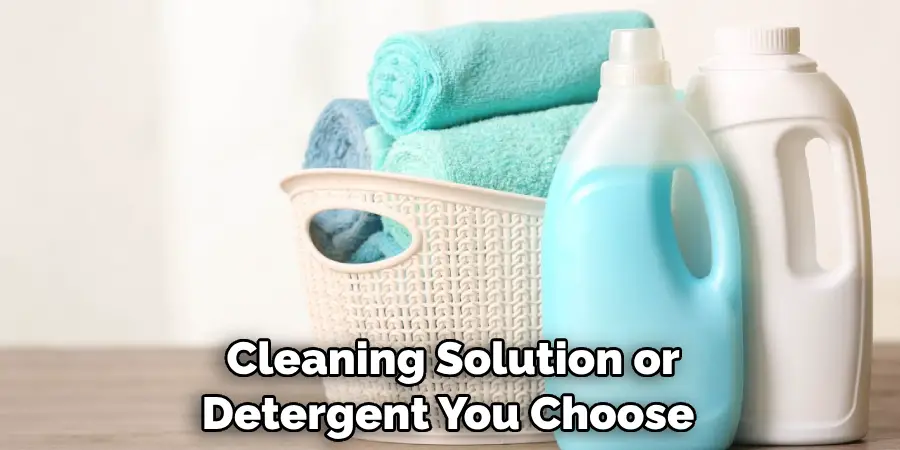
Before using the solution, test it on a small, inconspicuous area first to ensure it won’t cause any discoloration or damage to the floor joists. If everything looks good, then you can proceed with the cleaning process.
Once you have cleaned the floor joists, be sure to thoroughly rinse them with clean water. This will help eliminate any remaining bleach residue and prevent any additional damage from occurring. After cleaning the space, ensure it is well-ventilated and dry before re-insulating your crawl space.
Conclusion
In conclusion, removing mold from crawl space floor joists can be daunting, but following the steps outlined in this blog can make the job easier. It is important to remember that proper safety and ventilation equipment should always be worn when operating in a confined environment such as a crawl space, and it is also important to remain vigilant for any signs of further mold growth so that the problem does not spread.
By following the correct steps, you can effectively eliminate mold growth from your crawl space floor joists and create a healthier environment for yourself and your family. I hope reading this post has helped you learn how to remove mold from crawl space floor joists. Make sure the safety precautions are carried out in the order listed.
